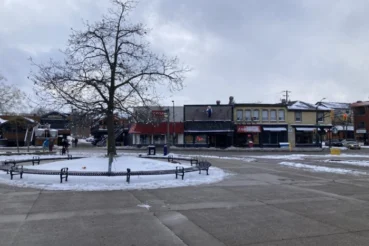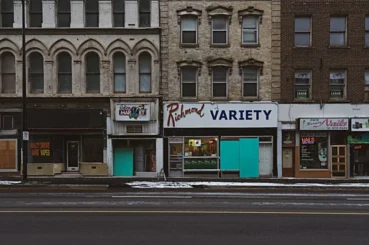London Market Report
2025 First Quarter Update
To start the new year, the London and St. Thomas real estate board reported a sharp pullback in sales activity, with resale units sold down 30% from the first quarter of 2024.
Over the last two years, the Greater London Area, like other real estate markets across the country, has experienced a significant decline in sales activity. Resale units sold in 2022 was down 29% when compared to the record year in 2021 before falling another 13% in 2023. While sales activity was up 9% in 2024, economic uncertainty relating to the United States has pushed even more buyers to the sidelines in early 2025. The Canadian Real Estate Association (CREA), through its various real estate boards and provincial associations, compiles transaction data for each of its major markets, with the CREA Stats Centre reporting sales data going as far back as 1980. While historical stats should never be the sole indicator of what’s to come, they are helpful to review and consider as part of the broader context. In this article, we'll outline latest transaction highlights for each of the communities comprising the London Area as well as overall performance by property type.
Introduction to the Greater London Area
London, the seat of Middlesex County, is the largest city in southwestern Ontario and the 11th largest metropolitan area in Canada. With close proximity to the GTA, Michigan and New York state borders, and multiple Great Lakes, the region is well-poised for future growth. It is the economic hub of southwestern Ontario, with major companies, hospitals, and higher education based in the city. For anyone familiar with London, new housing development is pervasive, with significant urban sprawl occurring across the city.
30 minutes south of London is St. Thomas, the seat of Elgin County. Ten minutes beyond St. Thomas, Port Stanley and other beach towns along Lake Erie offer recreational getaways for London locals. A similar drive west of the city are the towns of Komoka-Kilworth and Strathroy-Caradoc, with a short drive further to reach the shores of Lake Huron. East of London, in Oxford County, are the growing towns of Woodstock, Ingersoll, Tillsonburg, and Norwich. With both the 401 and 402 highways running along the southern border of London, surrounding Middlesex County and these neighbouring communities are easily accessible. For this reason, they can be considered part of the Greater London Area.
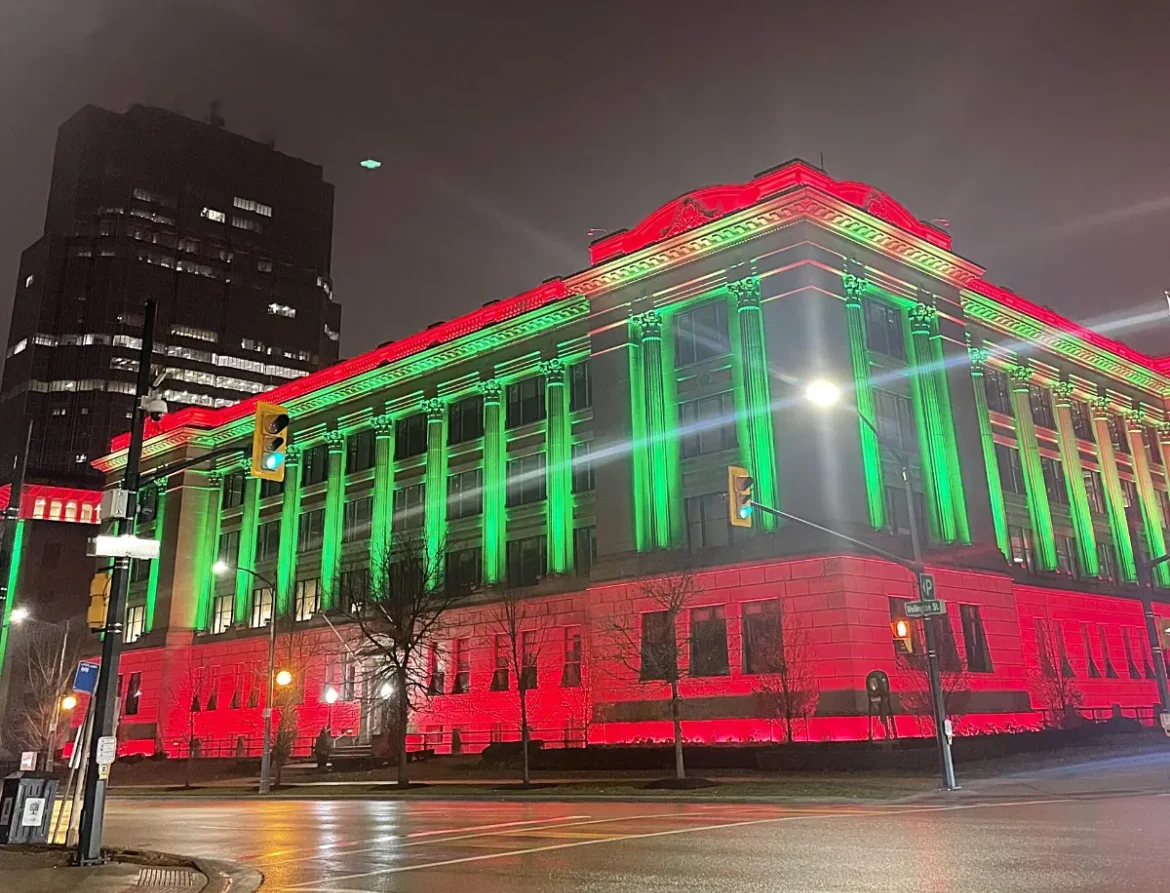
Greater London Market Highlights
Across all communities included in the GLA, the median sale price in the first quarter was $600K, flat from the prior quarter but up slightly year-over-year. A quick note on median versus average values: median sale price, which reports the sale price of the middle-priced property in a group, is a more reliable metric than average sale price because it removes outlier transactions (i.e. properties that have sold for a lot of money or for next to nothing). Outlier transactions skew the average from what it really should be, which is the price of the average, or mid-priced home, in a particular community. The same concept extends to selling times, with London's average days on market currently at 41 days while the median listing is selling around 25 days in the first quarter.
Despite minimal price growth over the past two years, London prices have experienced significant growth since 2018, outperforming neighbouring markets like Kitchener-Waterloo, Hamilton, and the GTA. This can be widely attributed to the relative affordability of London homes when compared to similar ones in these nearby markets. For the preceding 20 years, London prices have more or less lagged behind the growth experienced in these markets, and it appears that recently the Forest City has been playing catch-up. Compared to the median price recorded in Q1-2020, London resales are now up 44%, which represents an annual growth rate of 7.6%. To compare London’s performance against other major markets in the province, check out our article on Top Markets in Ontario here.
Part of what drove London’s staggering price growth during the pandemic was its shortage of homes available for buyers. During the peak of the real estate bubble in early 2022, the Greater London Area was reporting 0.4 months of inventory, meaning that listed homes were selling in under two weeks on average. Without new listings hitting the market, London inventory would have disappeared in less than a month. When inventory levels are this low, prices have to rise on account of too many buyers bidding on too few properties. This leads to bidding wars and runaway prices which were consistent themes during the market peak in late 2021 and early 2022. Over the trailing 5 years, the GLA has been mostly a sellers’ market, with 2 months of resale inventory on average.
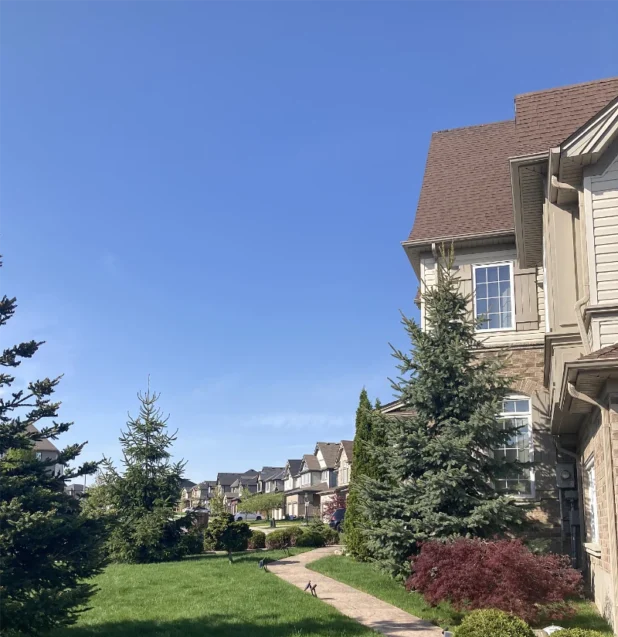
Beginning in March 2022 and extending into 2023, multiple interest rate hikes resulted in a market slowdown, with London ending 2023 with 4.4 months of available inventory, more than double the historical supply recorded since 2018. After inventory declined during the first quarter of 2024, supply has increased to sit at just under 5 months, up 40% year-over-year. Homes are taking a long time to sell, up 5 days year-over-year and 12 days from the trailing 5-year average. In London and across the province, buyers did not re-enter the market as initially forecast in 2024.
Most properties in Greater London, about 3 out of 4, are detached homes. Detached homes in London, as expected, are more expensive than apartments and semi-detached properties, with median sale prices of $650K and $466K respectively in the first quarter. Over the past 5 years, detached homes in Greater London have seen prices grow at a slower pace than the attached segment. In Q1-2025, detached homes continue to sell slightly faster than the apartment segment, although both property types are taking five days longer to sell than they were a year ago.


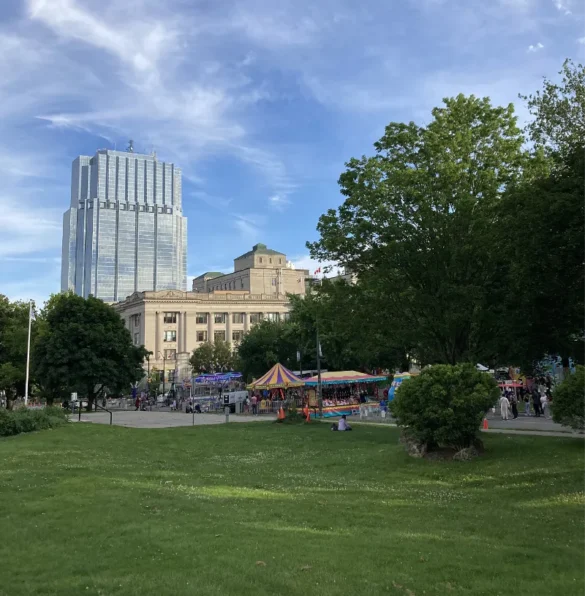
Community Overview
North, South, and East London
You’re probably wondering why West London is missing from the title. I certainly was when I began reviewing data reported by the London and St. Thomas board to CREA. It is not a typo or omission. The local real estate board has divided London into three main regions due to the Thames River that winds its way through the city and forks near the downtown core. East London is bounded by the Thames River to the north, south, and to the west, where the river runs through Western University and alongside Richmond Street, the main thoroughfare to downtown London. South London, similarly, is the portion of the city that is south of the Thames River and its downtown fork. Finally, there is North London, which is bounded to the south and east by the fork of the Thames. These three boroughs each have multiple neighbourhoods within them and account for the majority of resale activity in Greater London.
Through the first quarter, London proper is featuring buyer-friendly market conditions, with resale inventory at 4 months for North and East and 5 months for South London. All three boroughs are reporting more inventory on a year-over-year basis and have similar selling times at 22 median days on market. When compared to the trailing 5-year average, each borough is featuring more than double the resale supply for buyers to choose from.
London proper features drastically different house prices across the city. North London leads the way, with a median sale price in the first quarter of $695K, up 2% year-over-year. This high-growth area is characterized by newer developments such as those in Masonville and Sunningdale as well as the big-box retail and new townhomes and condos surrounding Fanshawe & Hyde Park. East London, historically and to this day, is the most affordable of the three boroughs, with a Q1-2025 median sale price of $500K, up 2% year-over-year. This area has the most diverse housing mix in the city, which includes historic luxury properties along the Thames River downtown, an array of apartments and multi-units in the downtown core, and smaller, more affordable detached homes east of Adelaide Street. Given this wide-variety, it’s important to speak with a realtor knowledgeable in your preferred location and property type in order to get a better sense of what – and where – you may be able to afford. Driven by its relative affordability, London East continues to feature the lowest supply of resale homes in London. Finally, South London reported a median sale price of $597K in the first quarter, down 1% year-over-year. Prominent neighbourhoods in South London include Wortley Village, Byron and Springbank Park, and White Oaks.
Community Overview
St. Thomas and Elgin County
St. Thomas and surrounding Elgin County is a short drive south of London. Its population of 50K is mostly based in St. Thomas, with just under 10K residents based in surrounding rural areas and the small townships of Central Elgin, West Elgin, Dutton-Dunwich, Southwold, Aylmer, Bayham, and Malahide. In terms of overall resale units sold, it is the largest GLA region after London's three boroughs. While sales activity is still down from historical levels, it remains a more active market than London, with unit sales over the past 12 months only down 11% when compared to the trailing 5-year average.
During the first quarter, St. Thomas and Elgin County reported a median sale price of $548K, down 5% from a year prior. After inventory steadily grew in 2023, resale supply fluctuated throughout 2024 before declining in the fourth quarter . Supply has ticked up to start the new year with 5.9 months of inventory recorded in Q1-2025. Buyers in this market have more supply to choose from than they did a year ago.
With relatively balanced supply and difficult affordability for new buyers, homes in St. Thomas and Elgin County are taking a long time to sell, with a median listing period of 39 days, up slightly from the prior quarter and 9 days longer than median selling times observed one year ago.
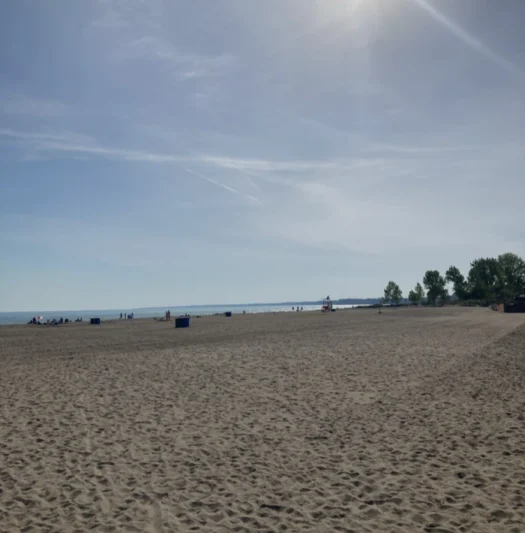
Community Overview
Woodstock-Ingersoll
The next largest region within Greater London is Woodstock-Ingersoll, more or less similar in population and unit sales to St. Thomas and Elgin County. Beyond the primary towns of Woodstock and Ingersoll, which are home to just over 50K people, the neighbouring communities of Zorra, East Zorra, Tavistock, and Blandford Blenheim form the remainder of the region. It is a unique smaller market, with direct access via the 401 and 403 to larger neighbouring cities such as London, Brantford, and the Tri-Cities.
Woodstock-Ingersoll recorded a median sale price of $607K in the first quarter, down 3% from the prior quarter and down 6% year-over-year. When compared to its trailing 5-year average, the median price is now down 2% and no longer outperforming the Greater London Area as a whole.
At the start of 2022, inventory levels in Woodstock were critically low, with only about half a month of inventory. This supply-demand imbalance is why prices in Woodstock-Ingersoll were up 30% in 2021. In 2023, as seen across most regions in Ontario, Woodstock-Ingersoll saw inventory levels grow in the third and fourth quarters, ending the year with close to 5 months of available supply. Inventory declined to start 2024 but has steadily increased, growing again in Q1-2025 to sit at 7 months. As experienced broadly across London and the province, properties in Woodstock-Ingersoll are taking longer to sell, up slightly year-over-year at 26 median days.
Community Overview
Tillsonburg & Area
Just south of Woodstock-Ingersoll and the 401 highway are the towns of Tillsonburg, Norwich, and surrounding counties of Southwest Oxford and Norfolk. The largest town of this area, Tillsonburg, has a population of just under 20K and is less than an hour drive from London and Brantford. The town has experienced strong growth in recent years, with the 2021 census recording population growth of 18% since 2016, significantly outpacing the overall province (5%) and London (10%).
Tillsonburg & Area ended 2024 with a median sale price of $604K, gaining 2% to start the new year to now sit at $624K. With a relatively small quarterly sample size and lower prices in the surrounding rural communities, large swings in prices can occur based on what type of properties sell in any given period. Speak with a realtor experienced in your market to get more refined insights on how demand for a specific neighbourhood or property type may be shifting.
In 2022, inventory increased more than ten-fold, ending the year at 8 months, the highest level for all regions within Greater London. As expected in conjunction with this increased supply, homes were also taking much longer to sell, leading all GLA regions with a median time to sell of 38 days. During the first quarter of 2025, conditions remain buyer-friendly at over 6 months of inventory and 47 median days on market, up substantially from where supply and selling times stood one year ago.

Community Overview
Surrounding Middlesex County
Surrounding Middlesex County is comprised of multiple small townships that border the west, north, and east boundaries of the city of London. In terms of overall sales activity, the largest township is Middlesex Centre, which borders London to the west and north and includes the fast-growing communities of Komoka-Kilworth, Ilderton, and Arva. To the east of London is Thames Centre, which is centered by the town of Dorchester. Other townships comprising Surrounding Middlesex County include Lucan-Biddulph, directly north of London beyond Middlesex Centre, Adelaide-Metcalfe and North Middlesex to the north-west, and Southwest Middlesex.
Surrounding Middlesex County, while only 5% of current resale activity, remains the most expensive market in Greater London with a median sale price of $782K in the first quarter. New housing development is progressing in many townships within this region, with most projects focused on detached and townhome subdivisions at premium price points. Median prices are up 10% year-over-year despite more inventory than anywhere else in Greater London. During the first quarter, inventory was stable but elevated at 8 months with median selling time growing to 44 days. Similar to Tillsonburg & Area, a small number of transactions across a large area with multiple distinct communities can result in drastic changes to median price.
Community Overview
Strathroy-Caradoc
Rounding out our list with just over 350 resales over the last twelve months is the municipality of Strathroy-Caradoc. The municipality has a population of around 20K and has experienced double-digit growth since 2016. Strathroy is less than 45 minutes from Sarnia, the shores of Lake Huron and surrounding Lambton County, and downtown London. It is even a closer drive to the high-growth towns of Komoka-Kilworth and Ilderton in surrounding Middlesex County. Strathroy, like Komoka and Ilderton, are experiencing a lot of new housing development to accommodate its growing population.
Strathroy recorded a median sale price of $645K in the first quarter, up from the prior quarter and up 3% year-over-year. When compared to the trailing 5-year average, units sold over the last twelve months in Strathroy is down 17%, making it less active than other townships on London's periphery but more active than London proper. Unlike other regions in Greater London, resale inventory fell substantially to start the new year, down close to 4 months to now sitting in balanced conditions at just over 4 months of supply. Median selling time of 28 days in the first quarter reflects this decrease in supply, unchanged from the same period a year ago and significantly quicker when compared to Tillsonburg, St. Thomas, and Middlesex County.
Summary
The Greater London Market report will be updated on a quarterly basis. Every market is different, but understanding available inventory levels alongside recent price and market trends can help prospective buyers and sellers make more informed decisions. You can subscribe to quarterly updates of the London Market Report report by completing the contact form below.
Thank you for taking the time to read this article. As you contemplate the next steps in your real estate journey, there are a variety of helpful online resources you can leverage, such as realtor.ca, the Canadian Mortgage and Housing Corp, and historical sales data and market insights from leading real estate websites like Zolo, Royal LePage, HouseSigma, and Wahi.


